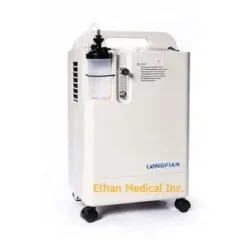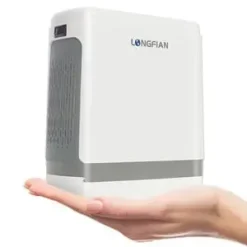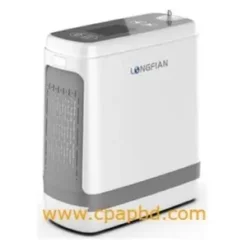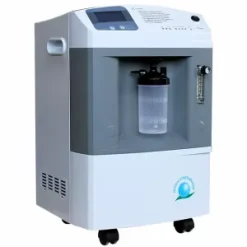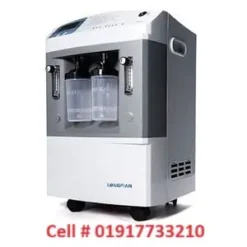Oxygen Concentrator Machine
An oxygen concentrator machine helps people with respiratory conditions by delivering concentrated oxygen directly from the air. Unlike oxygen cylinders that store oxygen, concentrators extract it from the surrounding air, filter out nitrogen, and provide pure oxygen to the user. This makes them highly convenient, especially for home use or travel, since they eliminate the need for refills and ensure a constant supply of oxygen.
How Does an Oxygen Concentrator Work?
Oxygen concentrators use a simple yet effective mechanism. They draw in ambient air, which consists of around 21% oxygen and 78% nitrogen. The machine filters the air, removing nitrogen, and delivers oxygen with a concentration of about 90-95%. The user receives this purified oxygen through a nasal cannula or face mask, depending on their condition and doctor’s recommendations.
Types of Oxygen Concentrators
- Stationary Oxygen Concentrators: These larger units are designed for home use. They suit individuals who need oxygen therapy continuously throughout the day and night. Stationary concentrators provide higher flow rates, typically ranging from 1 to 10 liters per minute (LPM).
- Portable Oxygen Concentrators (POCs): POCs are lightweight and easy to carry. Battery operation makes them suitable for individuals who require oxygen therapy while on the go. Although portable models offer a lower flow rate compared to stationary ones, users value them for their mobility.
Benefits of Using an Oxygen Concentrator
- Cost-Effective: Concentrators extract oxygen from the air, eliminating the need for regular refills like oxygen tanks, which reduces long-term costs.
- Safe and Reliable: As long as they have a power source, oxygen concentrators ensure a constant oxygen supply. They also avoid safety hazards that oxygen cylinders may pose, such as leaks or explosions.
- Improved Mobility: Portable oxygen concentrators allow users to maintain an active lifestyle. Many models are approved for use on airplanes, enabling patients to travel freely.
Key Features to Consider
- Flow Rate: Oxygen concentrators come with varying flow rates, usually measured in liters per minute (LPM). Your doctor will prescribe the appropriate flow rate based on your medical needs.
- Battery Life: For portable models, battery life is a crucial factor, especially when using the device while traveling or away from a power source.
- Noise Level: Some concentrators produce noise, which may concern users who need them while sleeping or in quiet environments.
- Size and Weight: Portable oxygen concentrators vary in size and weight. Some models are more compact and easier to carry, which is important if you need a device that provides convenience and ease of movement.
Who Needs an Oxygen Concentrator?
Doctors typically prescribe oxygen concentrators for people with chronic respiratory conditions such as Chronic Obstructive Pulmonary Disease (COPD), severe asthma, pneumonia, or cystic fibrosis. Individuals recovering from surgeries that affect lung function or those with low blood oxygen levels (hypoxemia) may also need them.
Maintaining Your Oxygen Concentrator
To ensure optimal performance and longevity, you should regularly clean and maintain your oxygen concentrator. Clean or replace filters as per the manufacturer’s instructions. Also, place the device in a well-ventilated area to prevent overheating.
Conclusion
An oxygen concentrator can significantly improve the quality of life for people with breathing difficulties, offering them the freedom to live more independently. Whether you need a home unit or a portable option, understanding the types, features, and benefits of oxygen concentrators will help you make the right decision. Always consult your healthcare provider to choose the best device for your needs.


